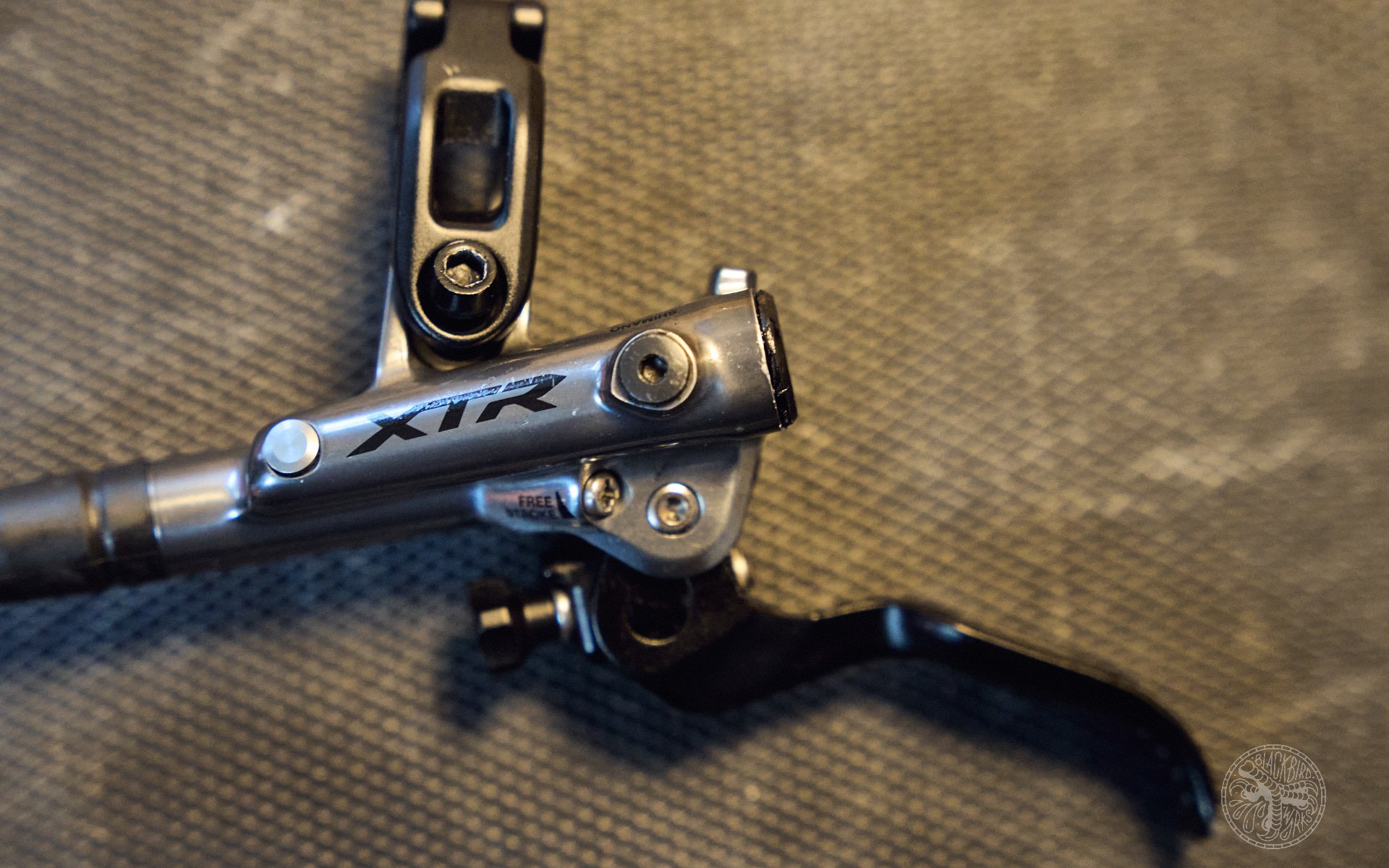
How To
Shimano Brake Bleed and Bladder Repair
Accidental Procedures
Some of the best discoveries are accidental. Like Velcro, Teflon and even Viagra. Daily use items that once didn't exist became indispensable problem solvers.
My discovery, regarding the new bleed procedure I am adopting when it comes to Shimano brakes, is twofold. Since the release of SRAM's Maven brakes, our NSMB contributors group chat has been flooded with questions and thoughts about the procedures one needs to carefully follow to achieve a perfect brake bleed. From massaging the pistons to carefully advancing them, the seemingly complex procedure required to put them into pole position has polluted our peaceful Whatsapp chat. Maybe it wasn't that peaceful pre-Mavens either, but the noise around the bleed process has been plentiful.

Pretty much all you need...you can add or remove tools depending on how deep you want to go
While I use SRAM brakes on some of the test bikes I ride, my household is on Shimano brakes for all the bikes we own. From 4-year-old XTs to brand new XTRs, our bikes are dressed in interchangeable parts that make it possible to maintain a uniform inventory. While I won't be ignorant enough to tell you that Shimano brakes are better, they are better for us in many ways. The light feel at the lever, easy bleed process, and interchangeable brake pads for the entire fleet makes it a very easy decision. If 6 pairs of SRAM brakes and a year's worth of pads showed up on the doorstep, I would consider the change tomorrow. Currently we chug along with the pros and cons of a decision made years ago.
Shimano brakes suffer from a couple of design flaws that some people can't get over. The occasional wandering bite point on successive pulls, the rather fragile lever blades - especially on XT brakes - and one last one that is more of a silent killer: the expansion bladder.

Shimano brake bladder, or diaphragm.
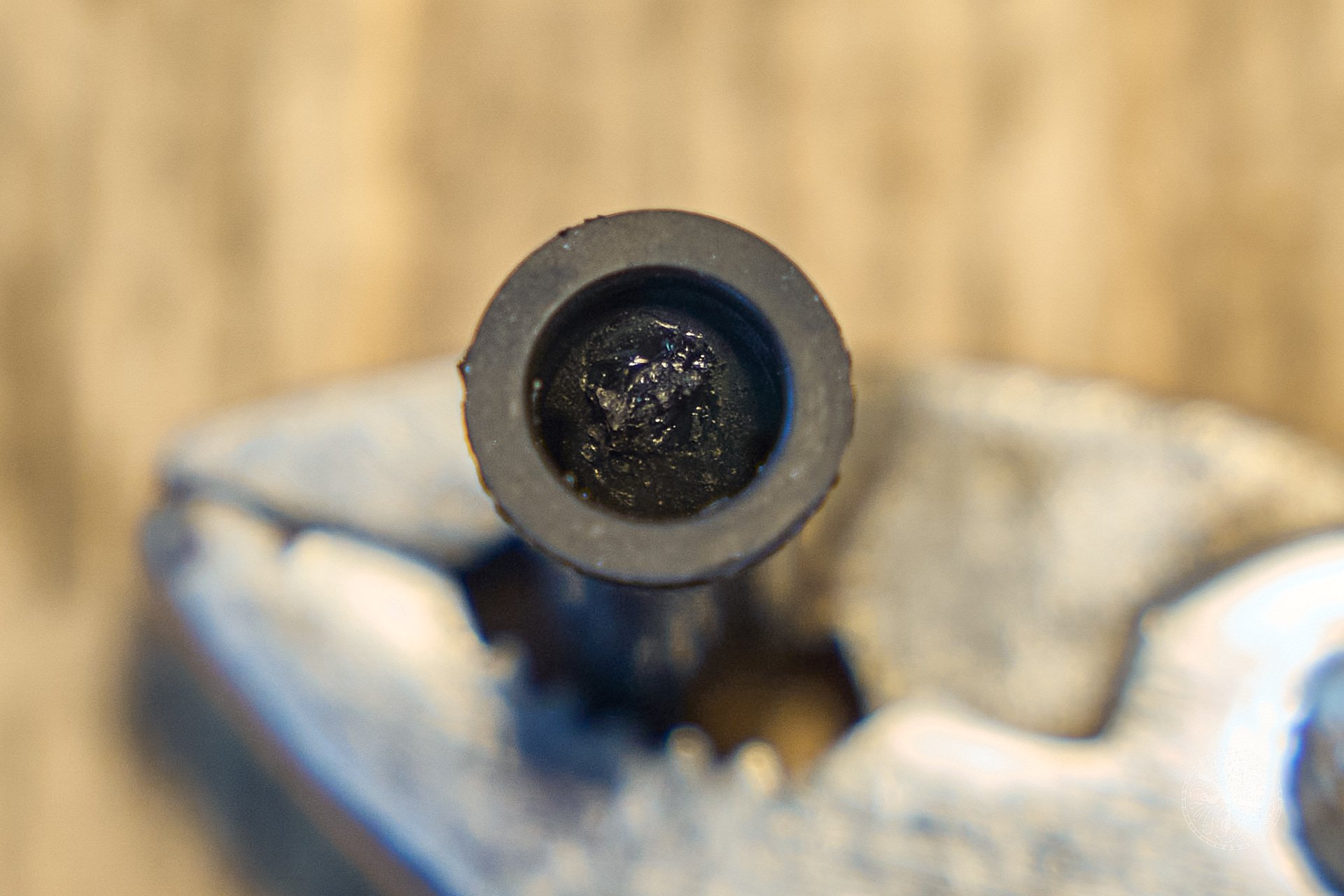
This one is repaired with a dab of ShoeGoo on the outside where it does not contact mineral oil.
This little devil of a rubber piece makes the Shimano brake lever what it is. Allowing air to be displaced by this expanding bladder as your brake pads wear down keeps the lever feel similar to brand new. At the bottom of the master cylinder reservoir, gravity will feed the dual seal piston with Shimano Mineral Oil. The main issue Shimano users may experience is that, despite the fact that the bladder's shape is designed to direct air bubbles from underneath to the bleed port, it loses its efficiency when the oil gets dirty and viscosity increases. Rocking the bike side to side and the lever back and forth while bleeding with the funnel, encourages stuck bubbles from under the bladder. It is the most effective way of removing air from the system.
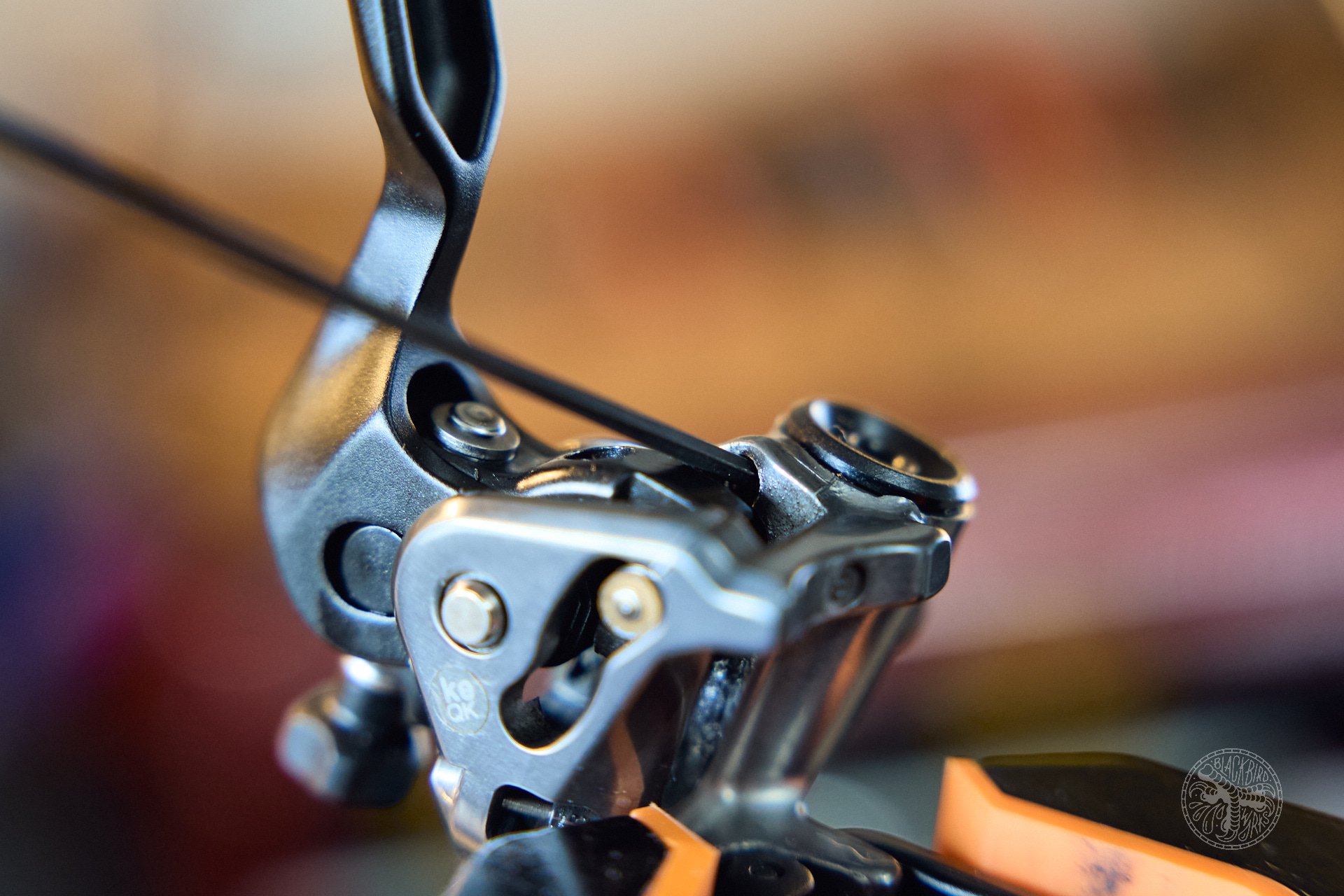
Use a 2mm hex tool to get into the well-hidden grub screw.

DO NOT back the screw all the way out unless you are working on XTR brakes.
Don't be lazy, open the hatch!
As much as I love a shortcut during repetitive tasks, there is one massive mistake you can make while trying to swap out worn Shimano brake pads; not cracking open the bleed port on the lever while pushing the pistons back into their seats. Failing to do this will often result in the ultra flexible membrane of the bladder developing a tiny pinhole which will cause it to start leaking until it's replaced or repaired.
Depending on the size, this won't allow a reservoir's worth of fluid to leak, but the effectiveness of the expanding bladder will be compromised and the system will no longer compensate for the wear in brake pads. Your levers will start pulling to the bars more often, especially if you store your bike hanging from a hook. Travelling with your bike will be a total mess as the change in atmospheric pressures will cause the lever to leak more often. Just grab that 2.5mm hex wrench to crack that bleed port open. It will save you a ton of headache. But if you have forgotten to do so, there might be a solution.

Just get a thin tool under there to pry the cap up.

Any excuse to get the Knipex out for me.
Step 1.
Position the brake lever with the bladder end facing up. This is best done while removed from the handlebars and then strapped or taped to the bars. I used the super handy Altangle Hanger Arm attached to the repair stand. Some seasoned mechanics I know have dummy handlebars that they clamp brakes to for off the bike bleeding. Whatever works for you and makes the procedure easier and more fun. Because if it is fun, you'll be more likely to do it.
The procedure is more or less the same for all Shimano levers but a little easier on XTRs than the rest of the line up due to the lever blade design. This is because there is less material to work around when accessing the grub screw. It's manageable on XT and SLX levers, but make sure you don't back the grub screw out all the way - just enough for it to let go of its hold on the bladder cap, which is no more than 2 turns. If you take the grub screw out all the way, you may have to remove the lever blade to put it back in. Do you really need the grub screw in there is a whole other question. I think it helps with retention but the cap fits quite tight and unless you dug your bar into the dirt, the cap shouldn't fall out under normal riding conditions.

This is about where the cap breaks free and comes out with the bladder.

The bladder can be removed from the cap easily for repairs.
Shimano lists the bladder in their service manual but they do not sell it through their b2b system. I managed to find a bladder on eBay and other online retailers so you should be able to source one with relative ease. If you can't, you have the opportunity to repair it with some ShoeGoo or equivalent flexible rubber cement. I put a tiny dab of it on the outside and it worked well. The glue does not come in contact with the mineral oil and is quite flexible, allowing the bladder to do its job. Once the bladder is out, I use a rolled up shop towel to soak up and clean the dirty oil out of the reservoir - it's a great opportunity to get it nice and clean in there before topping it back up with fresh fluid.
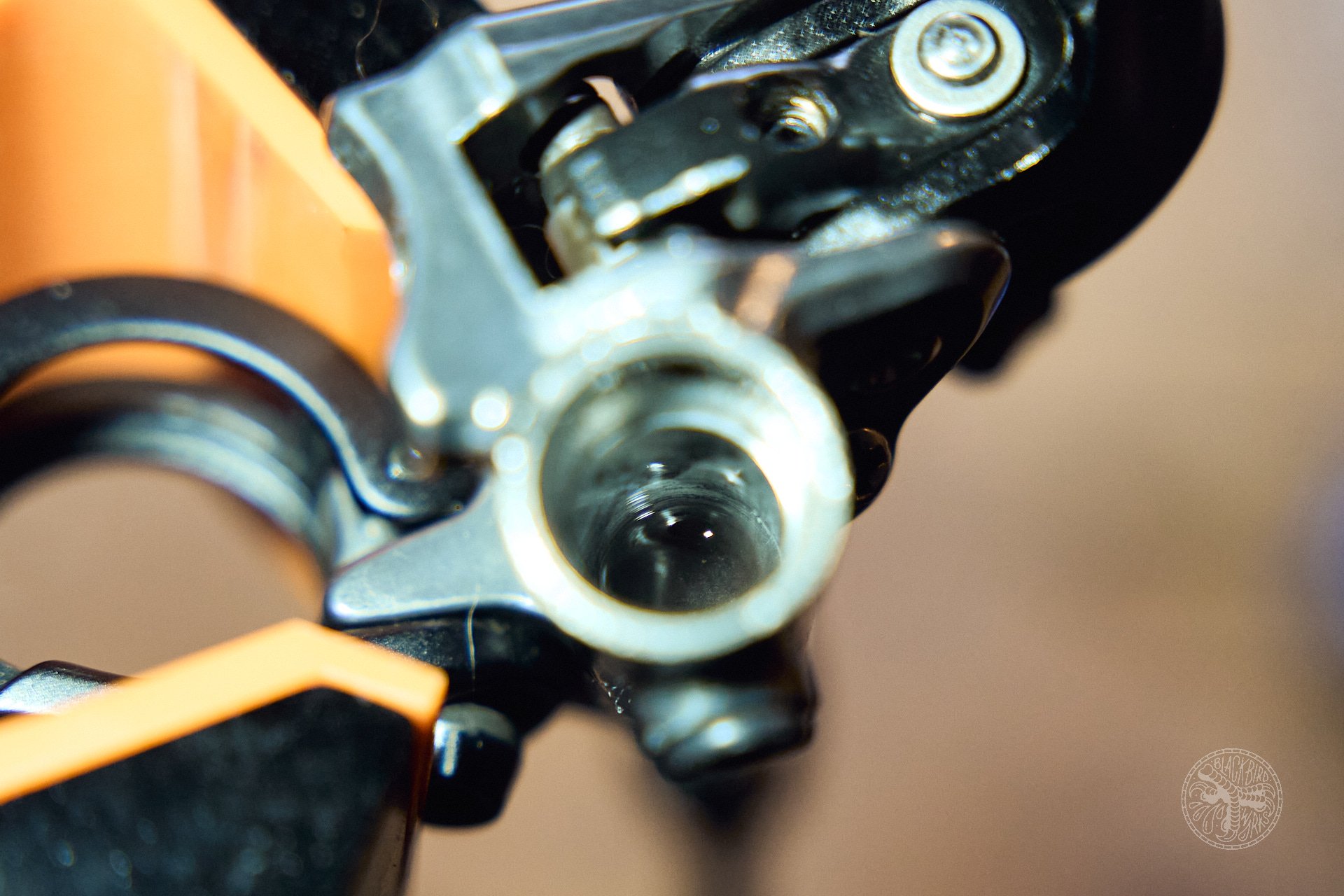
Black oil means poor brake performance.

Roll up a strip of shop towel and let it soak up all the nasty oil.
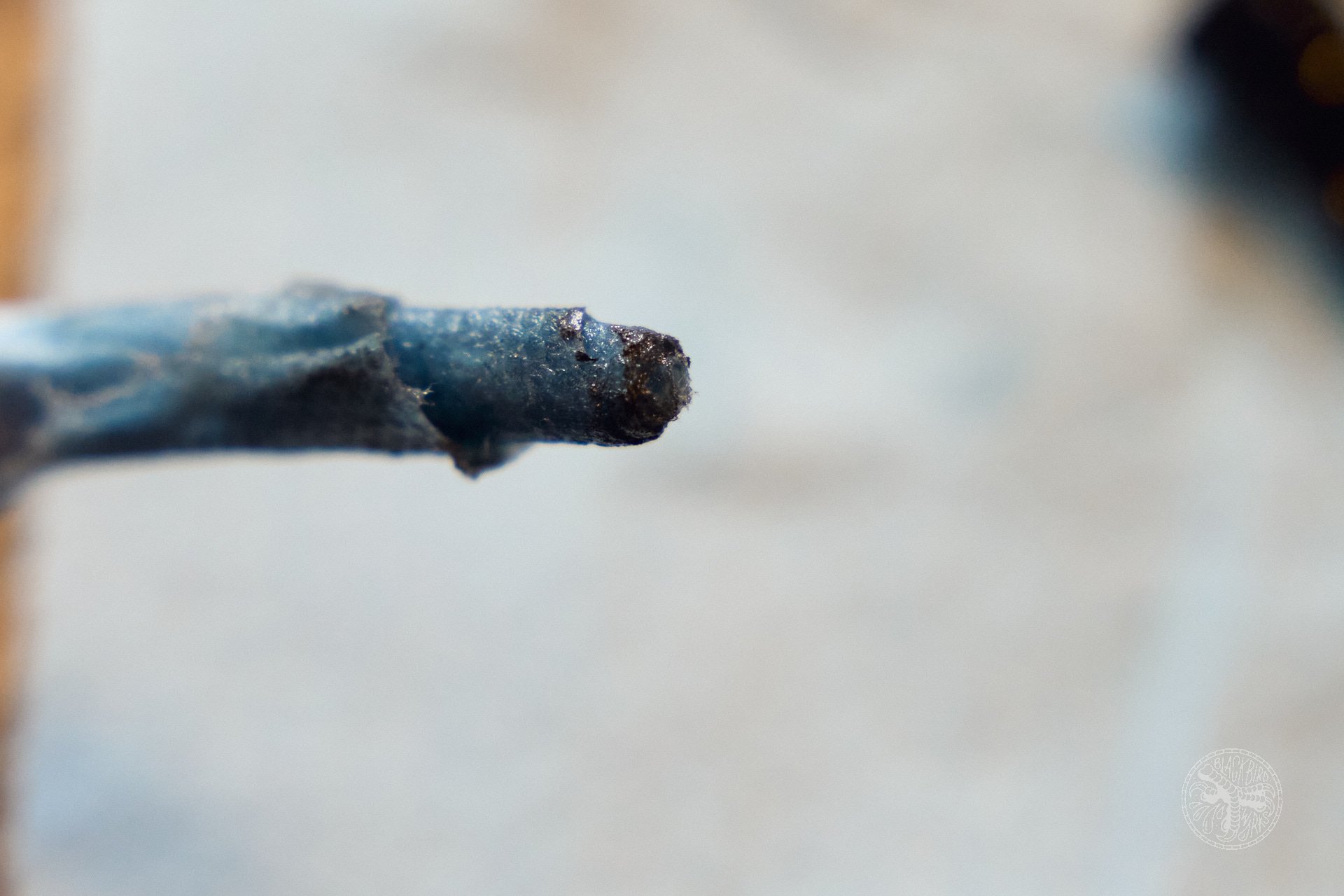
All the black stuff is the reason for inconsistent brakes. When contaminated, the mineral oil's viscosity increases, restricting the smooth flow of fluid.
Fill 'er Up
To top the fluid back up, you have a couple of options. If the rest of the system is in good shape, just pour new mineral oil until the level reaches the bottom of the bleed port screw. I found this to be a great level as the bladder itself displaces some oil as it's inserted back into the master. If you'd like to clean the system out a little more, fill up a syringe with plenty of fresh fluid and crack the 7mm bleed port nut open on the calliper as you push the new fluid into the system from the lowest part of the system. This will force all the bubbles up into the master which is what you want. It's the easiest spot to get them out of the system, especially since there is a massive hole you are working with. Soak it up with more shop towels and when you are satisfied with the clarity of the oil, fill it up to the bottom of the bleed port. You are almost done.

Crack that 7mm nut and push some oil in with a syringe that fits nicely on the bleed port. I like the Shimano's newer bleed kit with the metal barb.
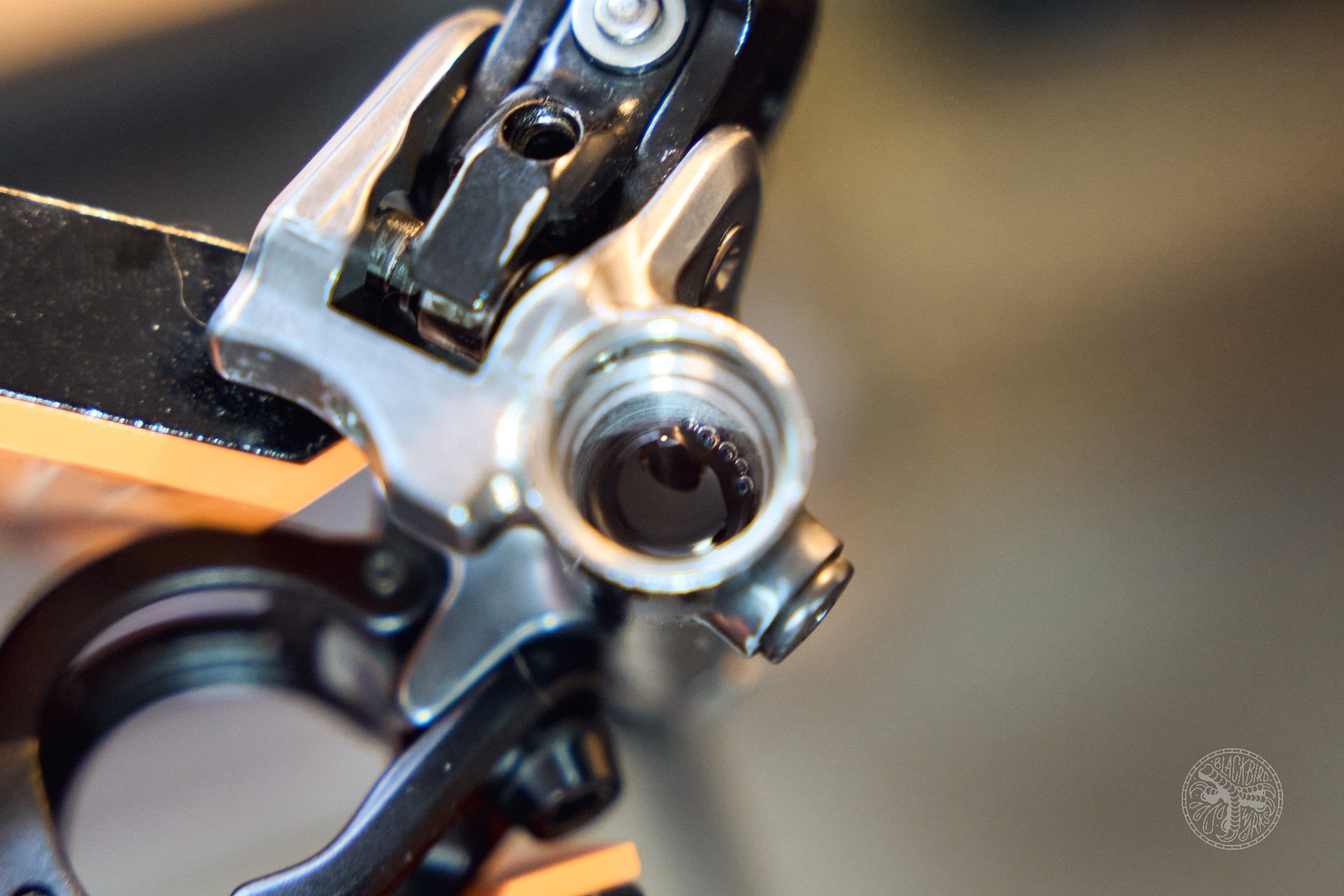
Fill to the bottom of the bleed port and tap to release bubbles.
It probably takes longer to perform this task than it does to read about it. I find it easy now that I've done it a few times. I have old levers at home that have been pilfered for parts that make for great practice pieces for tasks like this and things like lever replacements. Knowing your brake system in and out is an amazing feeling. Avoiding DOT fluids also helps with this, despite Shimano mineral oil and the stuff that comes in the new SRAM brakes being quite toxic to humans and nature. Remember to handle things with care, use gloves, and dispose of used oils and soiled rags properly.

Pay attention to the notch on the reservoir that corresponds to the one on the plastic plug.
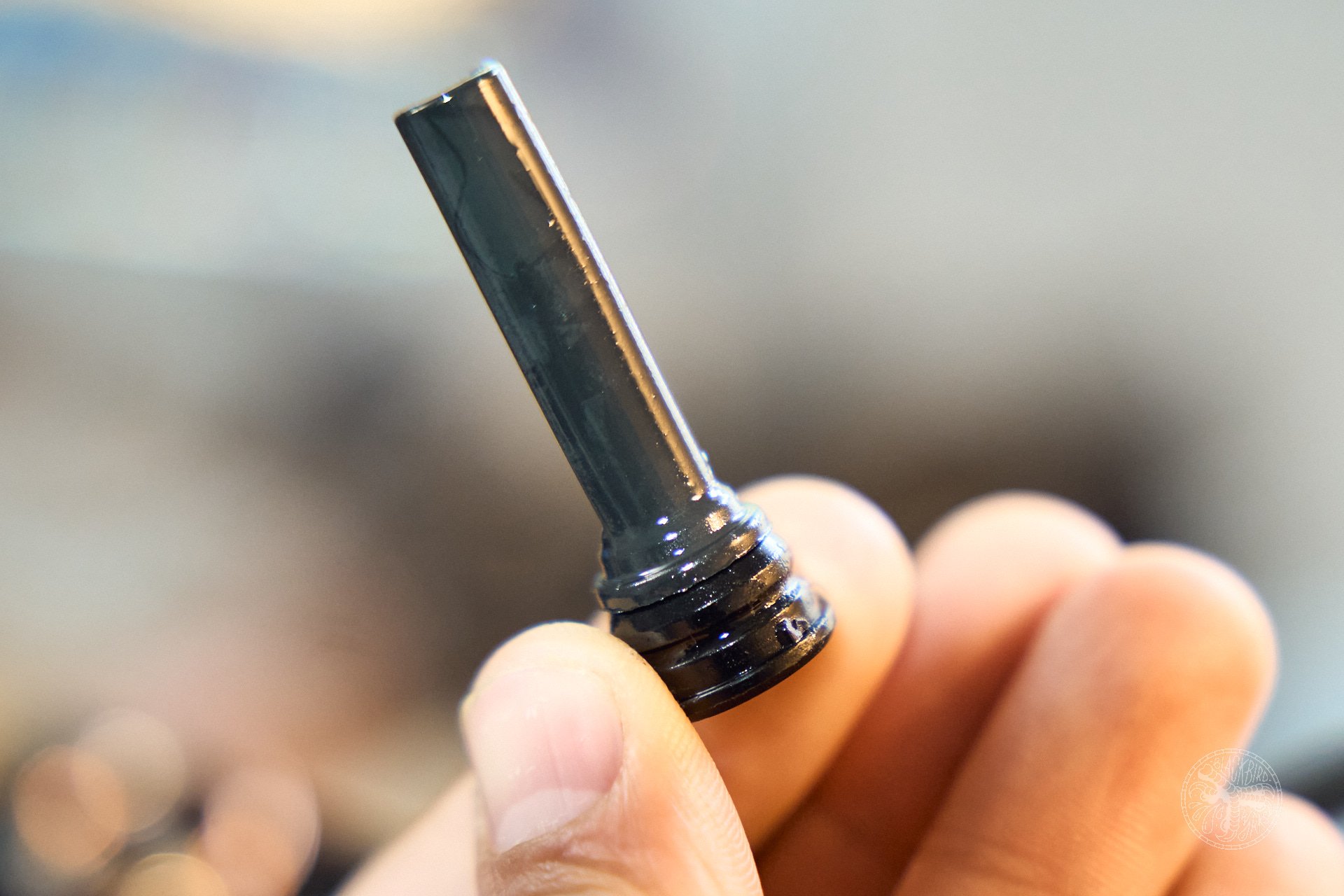
New or repaired bladder ready to drop in. Notice the corresponding lip on the plastic.

Gently drop it in, being careful to line up the notch to lock it into place. Gentle taps may be necessary.
Once the bladder and the cap are back on the master cylinder and the syringe is off the caliper, tighten the grub screw back up and clean your tools with some isopropyl alcohol.
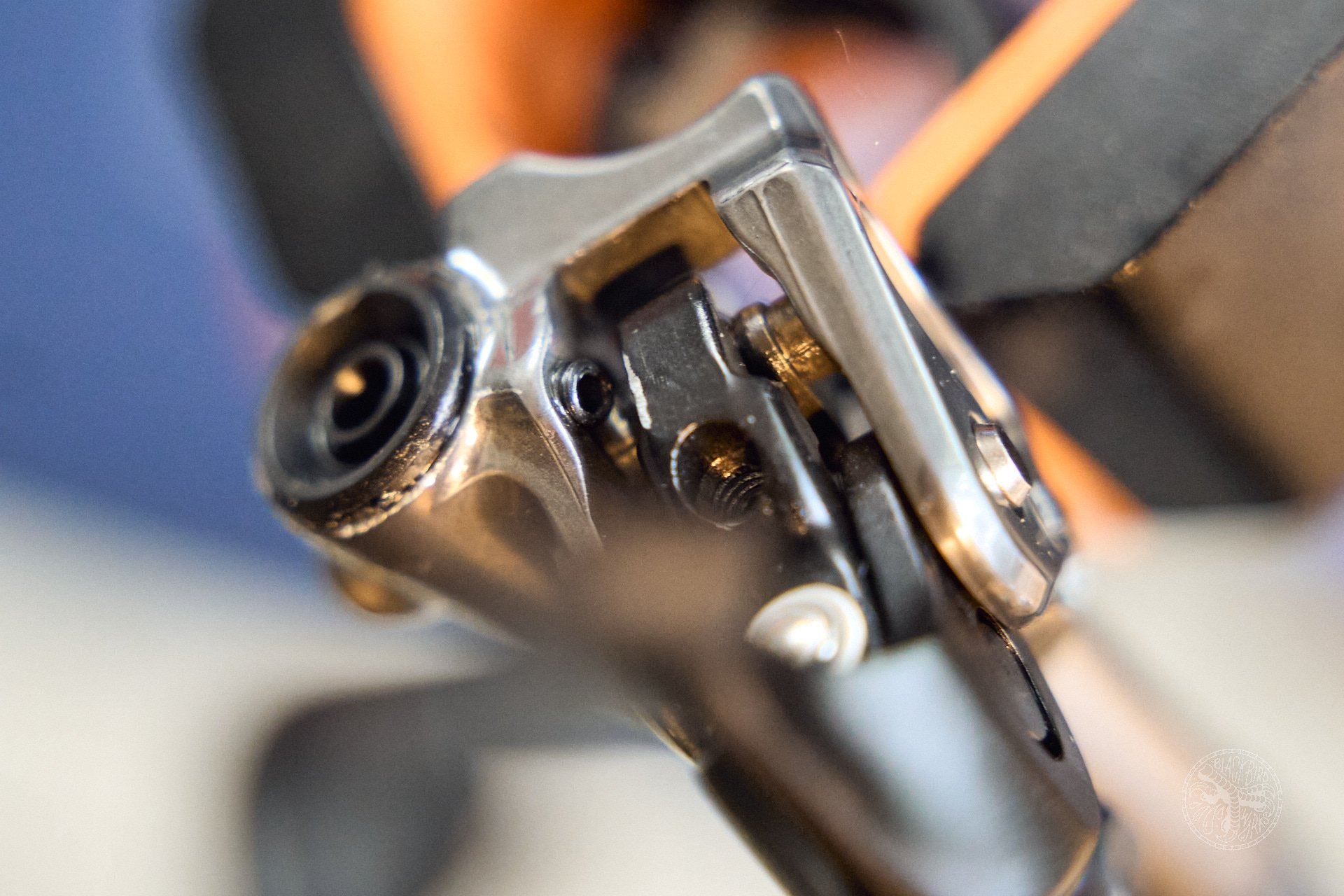
Ready to snug up the grub screw.

This is all that was spilled in the process, mostly from the syringe I disconnected. Not bad I'd say.
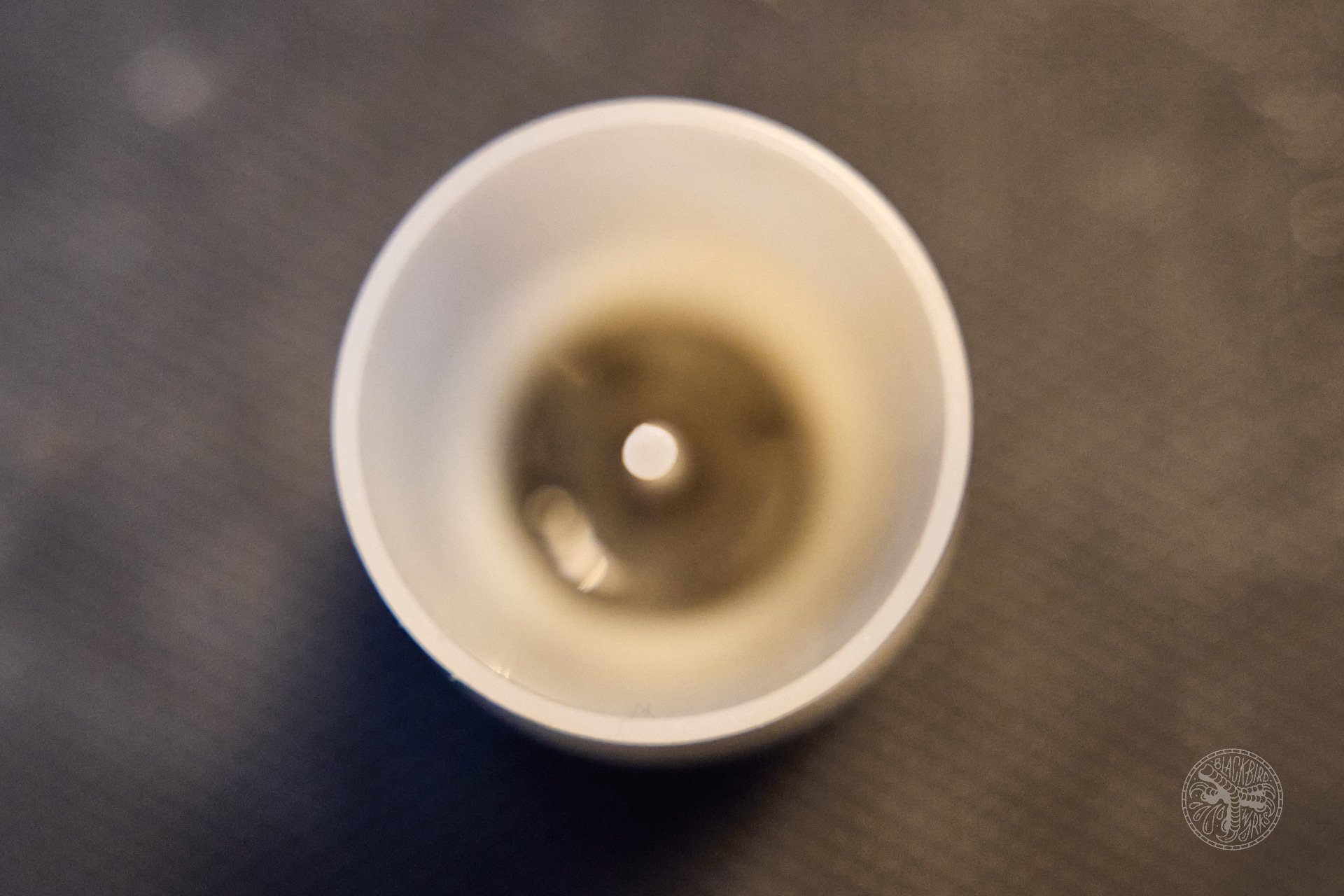
No need for this funny funnel. I do not like using the funnel Shimano recommends for their bleed procedure as I find it to be poorly designed, but I don't have an alternative for a quick bleed. I use this to push the pistons back in at the time of replacing brake pads.
Just to clarify some of the terms I used in this how not-to bleed your Shimano brakes article. Some of the terms are interchangeable and confusing, so maybe this will help.
Brake lever: The entire assembly that clamps onto your handlebars.
Master Cylinder: Same as above.
Brake Lever Blade: The part your finger pulls to do the braking.
Reservoir: The round bulge on top of the master cylinder that holds all the extra oil.
Grub screw: The screw that holds the bladder cap onto the reservoir on the master cylinder (getting juicy now).
Bladder: The flexible, expanding oil displacement part of the master cylinder. Not visible until taken out.
(air) Bubbles: The reason your brakes feel spongy due to improper bleeding or a damaged bladder.
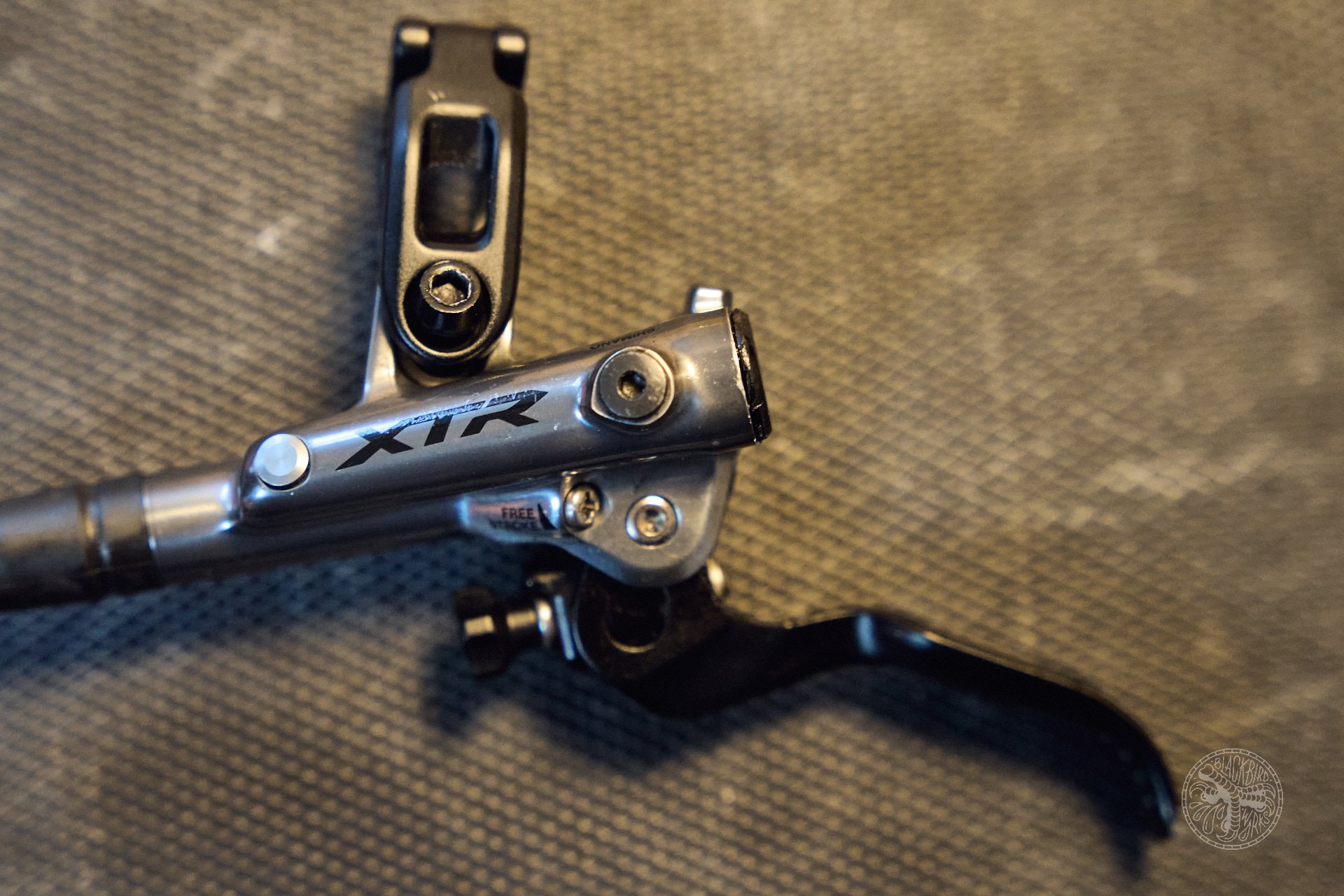
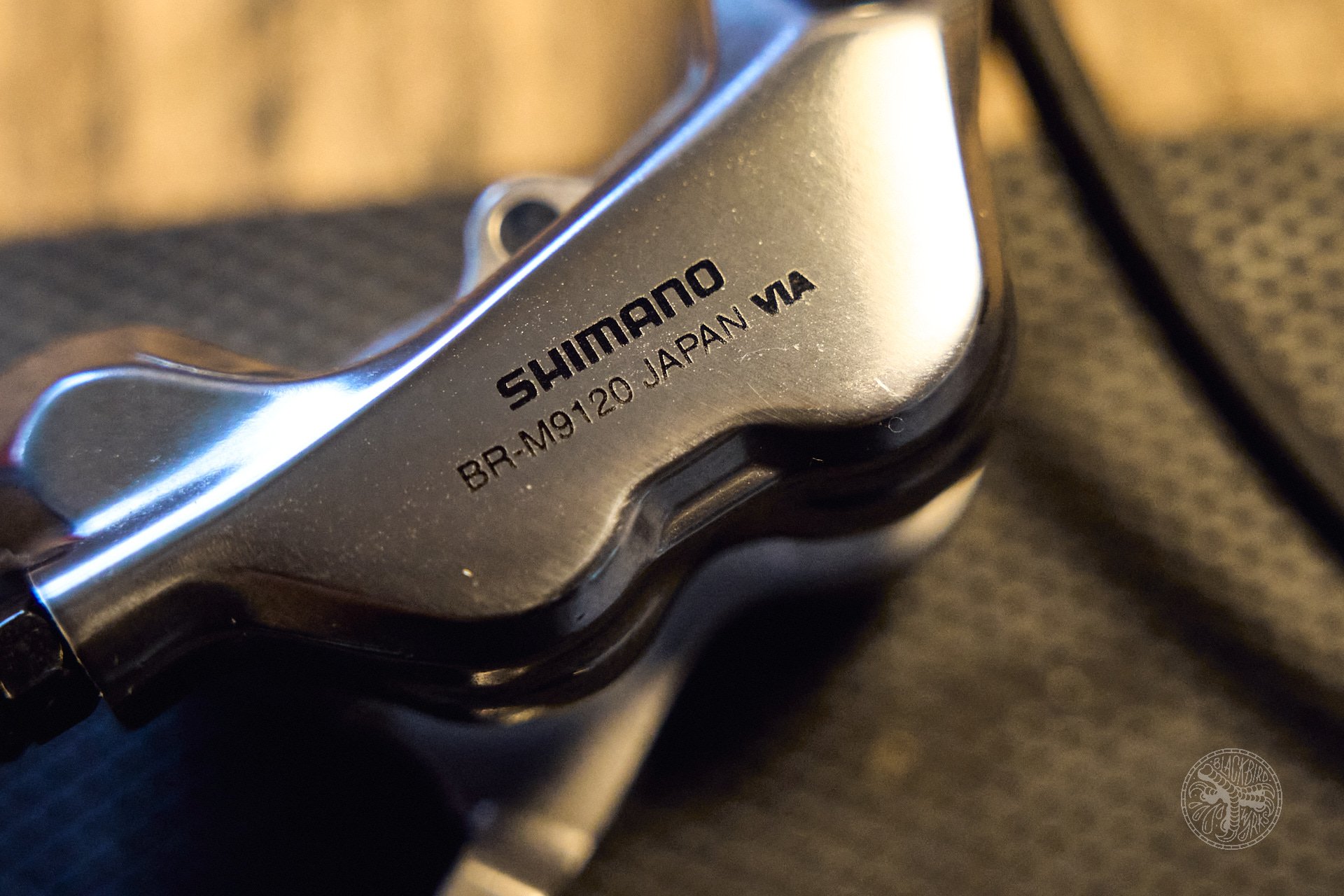
This really is not how Shimano would recommend you bleed your brakes but I find it to be the absolute best way to make sure no air is trapped in the system, as the highest part of it is a centimetre wide opening that lets all the bubbles out. I get rock solid feeling brakes every time after this procedure which is proof enough for me. This is also the only way to replace or repair the bladder that is so easily damaged if you replace your brake pads using improper methods (that's the most common reason to resort to this tutorial of sorts). There are a few other brake brands out there still using open-top bleeding techniques, Hope brakes being the most common.
If you are unsure about this process, let the professionals take the wheel. You can get a wicked Shimano bleed by using more common techniques and proper Shimano recommended tools.
5'8"
162lbs
Playful, lively riding style
Photographer and Story Teller
Lenticular Aesthetician

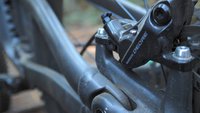
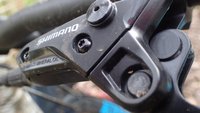








Comments
Dogboy
4 weeks, 1 day ago
Great article with some nice details, but I don't understand the dislike of the funnel. I wish all brakes used one for their bleed process. You mention that Shimano doesn't recommend bleeding your brakes as described, but you don't mention why. It's my understanding that they don't want you pushing dirty mineral oil, with particulates, up through the delicate internals of the master cylinder. It's definitely more time consuming, but I do a gravity bleed to get clean oil from the lever down to the caliper. Another trick for getting pesky bubbles trapped in the master cylinder is to remove the lever from the bar, with the bleed funnel about a third full, and tilt the lever in all directions while squeezing the lever repeatedly. Anyhow, I don't mean to sound like I didn't enjoy the article because it is informative and well done. Cheers!
Reply
fartymarty
4 weeks, 1 day ago
I love the funnel. It's so easy to do a quick burp every few months and you're good to go.
Reply
Kenny
4 weeks, 1 day ago
Same. 5 minute lever bleed every 20 rides or so keeps things perfect. So easy and so clean.
For a full bleed I push/pull fluid from a syringe at the caliper with the cup up top.
The gravity method with a rag on the caliper is too messy for no real benefit. I'd only do that if I was helping a friend who let their brake fluid get really filthy. I don't let my oil get dirty enough to be an issue. I change it when I do a fork lower leg service by pushing new fluid into the system from the bottom.
Reply
Deniz Merdano
4 weeks, 1 day ago
This is not a Shimano approved procedure mostly because there is just so much that can go wrong. The funnel bleed is mostly effective and is universally manageable. I just dislike the architecture of the funnel, how it attaches, how the plunger works and how leaky it is. I also have some tricks I use with the funnel like creating vacuum on it with to encourage bubbles through. It's a borderline dangerous technique as it involves...body parts
Reply
fartymarty
4 weeks, 1 day ago
Someone needs to make an after market aluminium one. I'm onto my second plastic one after hamfistingly crossthreading the first one.
Reply
Deniz Merdano
4 weeks, 1 day ago
Pinner Machine Shop makes an aluminum one. It's really nice. But I'd rather cross thread the plastic cup then the master cylinder itself
Reply
AndrewR
4 weeks ago
The Pinner Machine Shop uses brass connectors for exactly that reason.
Reply
taprider
4 weeks, 1 day ago
it is nice to have a translucent one too
good to see oil level while your head is down near the caliper
Reply
Brad Nyenhuis
4 weeks, 1 day ago
The Hope Tech 4 bleed kit has a beautiful aluminum funnel that has the same thread and fits Shimano perfectly. Park makes a nice ceramic-like one also.
One reason to stick with the cheapo Shimano one is that it protects against cross threading those tiny fragile reservoir cap threads.
Reply
Lu Kz
4 weeks, 1 day ago
The plastic cup is intentionally designed to be a wear tool!
Reply
Lynx .
4 weeks ago
Hope make one, as do a couple other places AFAIK. I managed to find a nice SS cup a bit bigger than the stock one, then used an old SS bleed fitting and steel epoxy welded it into the cup and now have a very reliable SS bleed cup and agree, a quick lever bleed freshens up the feel of the lever.
Reply
handsomedan
4 weeks ago
Curious to know what could go wrong?
Reply
Deniz Merdano
4 weeks ago
I mean sky is the limit. Anything that can lead to loss of braking power would be bad. But off the top of my head, damaging a healthy bladder and not realising it would be bad. Forgetting to tighten things up could be bad. Depends.on how many beverages are consumed during the task i figure. For me, it's a one cortado job.
Reply
handsomedan
4 weeks ago
Just to clarify we are talking about the lever bleed that Kenny described?
https://epicbleedsolutions.com/blogs/articles/5-minute-shimano-mini-bleed
Reply
tashi
4 weeks, 1 day ago
I also love the funnel and have recently switched to Hayes which are a two syringe type of bleed, which I’ve always struggled with and my kit only came with one.
Does anyone know if I can just stick with my Shimano bleed techniques on my Dominions?
Also: love this article, I have 12-year old XTR’s I can’t part with (so shiny😍) that have been waiting for this service.
Reply
Deniz Merdano
4 weeks, 1 day ago
I've bled Dominions with Shimano prodecudes succestuffly. But doesn't mean thats how one should do it.
Reply
DanL
4 weeks, 1 day ago
I got whatever the two syringe expert version kit is which also works for SRAM and Hope - it made everything a lot easier.
But again, I really do enjoy bleeding brakes.
Get to home Depot / Rona and pick up some thick electrical wire which you can then bend into shape to hold syringes and catchcups in place.
Reply
Lynx .
4 weeks ago
Your old XTRs are still shiny, really? :-O All the ones that came to this island soon developed nasty what seems like corrosion, not a good finish for the cost of the brakes IMHO.
Reply
Brad Nyenhuis
4 weeks, 1 day ago
What I don't like about gravity bleeds is that it actually works against gravity. Air bubbles rise naturally which is why a bottom-up bleed works better IMO. Just letting the oil run through the system doesn't necessarily force the air out. The fluid can simply slide right past it and out.
Reply
Kenny
4 weeks, 1 day ago
Exactly. Set the bike up in the stand so the whole run from caliper to master is as vertical as possible and push new fluid from a syringe at the caliper, up into the bleed cup. It's pretty tough to not get the bubbles out with this method. Do a few syringes worth so you completely exchange out the old fluid.
Reply
skywalkdontrun
3 weeks, 6 days ago
Unless you have a closed system (2syringes) you’re just going to end up pushing fluid past the bubble catch points with this method. Think of a stream eddying around a rock. It’s actually better to do the gravity bleed because you can tap the bubbles out and since the old is traveling downwards, it gravity allows the oil to take up the negative space.
Reply
fartymarty
4 weeks, 1 day ago
I recently bled one of my Cura 2s and had the brake off the bike. I would always push fluid upwards so would flip the caliper and lever depending on which way I was pushing. It seemed to work well as the bubbles kept going up.
Reply
Kyle Dixon
4 weeks, 2 days ago
This Pinhole in the Bladder thing wasnt something I was aware of but its neat to learn. Thanks Deniz!
It also means that this weekend I'll now be pulling apart a gaggle of Deore and SLX levers to see if the leaks are from ingested sand causing Scored out master cylinder bores or if they're rresurrectable after some Shoe Goo lovin' on the bladder.
And Hey, they're already not functioning, I cant make 'em any worse right...
Reply
Deniz Merdano
4 weeks, 1 day ago
That's the spirit!!! Take things apart ad find the surplus parts that obviously didn't need to be in there
Reply
fartymarty
4 weeks, 2 days ago
I've been running Putoline HPX 2.5 in my XT/Zee for several years now and it seems to get rid of the wandering bite point. It seems less viscous than Shimano mineral oil.
Reply
Deniz Merdano
4 weeks, 1 day ago
I have ran water in my Shimano brakes in an emergency while on a big ride. Worked really well. Didn't seem to migrate to the caliper in my case and boil. But im curious about other oil options.. why did you switch?
Reply
fartymarty
4 weeks, 1 day ago
I got sickn of wandering bike points so switched. Read a lot about Putoline on the interweb so thought I would try it. It's a fork oil but seems fine and seems to solve the problem. Plus it's cheap for a big bottle. I think the wandering BP is due to trapped air. A more viscous oil is going to trap more bubbles which gets worse as the temp drops. My brakes are also really old 785s with Zee calipers so owe me nothing if they die.
I also run it in my Cura 2s
Reply
Flatted-again
4 weeks, 1 day ago
I’ve been using redline likewater for the same reason, and it’s great. I think even a bit cheaper than shimano mineral oil too. There’s some big spreadsheet out there with all sorts of options, their viscosities under different boiling points, freeze points, etc.
Reply
Shinook
4 weeks, 1 day ago
I only get the wandering bite point in the cold, below freezing. I found it severely aggravated by the "lever bleed" people do, I'm assuming overfilling the system prevents proper retraction, because it improved a lot with the correct fluid volume, but never went away entirely.
Reply
jason
4 weeks, 1 day ago
I use putoline as well. It is a much lighter weight oil and far more slippery. But because of its lightness air bubbles don’t get trapped the same, it works better in cold temps as well. Intend brakes recommend it for their brakes. Although that said, I have been trying to get a stubborn air bubble out of a rear brake. Hopefully solved but if not I will have to try this method.
Reply
fartymarty
4 weeks, 1 day ago
Always pushing up and lots of tapping usually does the trick.
Reply
rolly
4 weeks ago
This comment has been removed.
rolly
4 weeks ago
What's the downside of Putoline? Does it do worse than Shimano fluid in the heat?
Reply
Shinook
4 weeks ago
FWIW the Intend Trinity brakes use Putoline, they've handled heat fine on my set.
Reply
rolly
4 weeks ago
Where do you buy Putoline?
Reply
Shinook
4 weeks ago
It came with my brakes, I'm not sure otherwise.
I've heard of people using Bionol, which is used in Trickstuff brakes, but again it's not the recommended fluid so YMMV. This is more readily accessible in some parts of the world than Putoline is
Reply
SiT
3 weeks, 3 days ago
In the UK from a MotoX dealer, i got mine here: https://www.dirtbikexpress.co.uk/products/putoline-hpx-r-fork-suspension-oil-25w-1-litre
Not sure on US availability.
Have seen others us Redline Likewater - perhaps better option for the US?
Reply
JT
4 weeks, 1 day ago
Aftermarket bladders can be found on Amazon and Ali for not much coin. I replaced a pal's who was a bit overzealous with a dual syringe bleed and tore his in the process. At the same time we replaced his caliper pistons with aftermarket phenolic ones in lieu of the ceramic Shimano units. The brake was 3+ years old and pretty well neglected and those were looking rough. Brake is entering 8months of use post repair without issue, and plus/minus depending on your perspective, the lever bite point is quicker and has remained consistent, better than his stock front unit. That came at the expense of a decrease in pad gap, but nothing outrageous. Shimano needs to make their own replacement parts available. It really is a disservice to the owners and mechs not to have wear items easily available. Love the feel when they're working, but every brake should be serviceable before recyclable.
Reply
Deniz Merdano
4 weeks, 1 day ago
I 100% agree with the frustration around the lack of small parts availability from Shimano. Some of it is really good, some of it really bad. Sram is light years ahead in this regard.
I've looked into titanium master cylinders from china bit never pulled the trigger on them, good to hear some alternatives are worth considering.
Reply
JT
4 weeks, 1 day ago
I did as ultimately the stock ones failed on one brake of each set of the two SLX's I had. Result: No good. Pistons were undersized and under slow/feathering pulls, they could rock enough in the bore to break seal, causing the lever to go to the bar. MC blowby in brake speak. Damn scary, even on a blue. These were the Risk branded units, and that only seems 125% appropriate for a name. Ended up hitting up the local non-profit, finding a set of non-series brakes with servo wave, and poached the MC pistons from them. Those were AL units as opposed to the plastic jobs stock in the SLX. Rebuilt and gave to a pal and he's been on em for 2 odd years now without issue. The other set I took to a bandsaw to get an understanding of the port hole locations between the res and MC bore. Those cutaways now live with a set of Tektro and Sram cutaways at the same non-profit, as training tools for new mechs and volunteers to understand why a company states to bleed their brakes a certain way
Reply
SiT
4 weeks ago
@Deniz Merdano
Here is the official Shimano guide:
https://si.shimano.com/en/dm/MADBR01/replace_diaphram
They recommend pushing the plug out via the bleed port, works, but def damages the diaphragm and thus removes any chance to inspect for the initial problem.
Also has part numbers, got mine from amazon, but number of UK/EU shops also have stock.
And yes def attached funnel when pushing pads back, especially is you have done some over bleeding mid pad wear.
Reply
SiT
4 weeks ago
also if looking for parts search look for diaphram / diaphragm (and not bladder) as well as part number#
eg.
https://www.sjscycles.co.uk/brake-levers/shimano-xtr-blm9120-diaphragm-unit-y1xk98030/
https://www.sjscycles.co.uk/brake-levers/shimano-blmt200-diaphragm-unit-y1xw98010/
Reply
SiT
4 weeks ago
Also Deniz Merdano, as well as aligning the cap with the lever, you also need to align the diaphragm to the cap (align the sloped parts) - see shimano guide posted above.
Reply
Gage Wright
3 weeks, 6 days ago
Where is this from? I am trying to fix the bladder on my saints and there is no rubber exposed cap on saints, the cap on them is flush with the lever body.
Reply
SiT
3 weeks, 3 days ago
from here: https://si.shimano.com/en/dm/MADBR01/replace_diaphram
also found
https://pitcrewcycles.com/products/shimano-saint-bl-m820-b-disc-brake-lever-diaphragm-y8v39801t-y8v39801t
if you see in the shimano guide, once you have loosened the grub screw, you push the cap out via the bleed port using an angled hex/screwdriver (see point #4) rather than levering of gripping the cap. downside of levering from the inside is that you will def damage the diapragm and thus removes any option to inspect for the original issue,
Reply
Kenny
4 weeks, 2 days ago
The picture with the syringe tube connected to the caliper with a huge air bubble in the middle of the tube gives me anxiety. :) Don't do that.
Otherwise very cool article! My main bike is on saints with mtx red and 203mm rotors.
Are there better setups out there? Maybe, but they are pretty freaking awesome and like you say, they're the devil I know! The MTX red are the secret.
Reply
Deniz Merdano
4 weeks, 2 days ago
Mtx reds on out front golds in the rear best setup for me!
Also, try taking macro photos and bleed brakes with a syringe, all while juggling a gutted out master cylinder.. near freaking impossible..
Reply
BarryW
4 weeks, 1 day ago
Yep, MTX reds on the 203 up front, golds on the 180 rear.
Love that setup.
Reply
Kenny
4 weeks, 1 day ago
What's the idea with gold in the back?
Reply
Deniz Merdano
4 weeks, 1 day ago
Better heat management and fade resistance! Reds have the modulation, Golds have the powaaa
Reply
rolly
4 weeks ago
What is the performance difference between these and the finned Shimanos? (I don't have any issue with the infamous rattle, but think the heat dissipation is a good idea).
dirtslurper
4 weeks, 2 days ago
I love the feel of shimano brakes but during covid I ended up installing 4 sets of shimano brakes. 2 of them work perfectly, but the other two are just giving constant problems. I installed 2 sets of slx 4-piston and 2 sets of saints (all on different bikes). One set of SLX and one set of Saints don't work right. The symptom is the same: Brake bleed is good, very firm levers, but no stopping power. It feels like the brakes are contaminated or not broken in yet. I've taken them to 2 separate shops and they insist nothing is wrong, the brakes just need to be re-bedded (after cleaning and sanding, of course). But I shouldn't have to re-bed them every ride!
To get them working perfectly, I take out the pads, and either clean & burn them with a torch, or completely replace them. I then use both brake cleaner and iso 91% to clean the rotors perfectly. Then I do the bed-in procedure and they work perfectly! For a ride, or 2 or 3 if I ride them on consecutive days. But if they sit for a week or two, they are back to no stopping power. Repeat the above process and they work again, but I'm sick of having to work on the brakes every few rides. Like I said, my other two sets work perfectly no matter how long they sit.
I have read that some shimano brakes leak at the seals very slowly. I have checked the back of the pads a few times and never saw anything, but over the winter I ordered a new set of (sram *gasp* db8s) to replace the messed up SLX on my hardtail and when I went out to replace them this spring I did notice the back of 1 pad had a wet spot on it. The others seemed dry, though.
So I guess I got screwed with some leaky caliper seals on 2 sets of brakes (maybe lack of quality during covid? I dunno). It would have been nice if the shops could have alerted me to the possibility of a leaky seal while the brakes were still under warranty. But I'm soured on shimano brakes.
The DB8s I put on my hardtail seem fine after 3 rides. They bedded quickly and feel like... sram brakes. Powerful enough for the stuff I do on my hardtail but require more force to get to that power.
I bought a set of TRP DHR-Evos to replace the messed up Saints. But I'm really sad because when the saints and slx brakes work, I really really like them.
Reply
JT
4 weeks, 1 day ago
I've wondered if it's due to the sealing surface of the ceramic pistons. Magnified, they are decidedly more irregular than their own phenolic ones used on lower end brakes.
Reply
rotorburn
4 weeks, 1 day ago
I've wondered that myself. The ceramic seems more prone to getting clogged up with north shore grime because of the porousness.
You can get many different types of aftermarket pistons for Shimano brakes, some of which seem to be anodized alu - I haven't had the courage to give them a try yet, but in theory that should slide a lot better and resist contamination better. Anyone give those a try?
Reply
opeh686
3 weeks, 4 days ago
Similar experience here with my set of XTs. Another bike with SLX has been completely trouble free. I store both bikes vertically which I have heard in another forum may contribute to the weeping piston seals. Mine take longer to contaminate ~ a couple months an I may start removing pads between rides during winter.
Reply
tashi
4 weeks, 1 day ago
Ya, that sounds like leaky calipers and to me. Happened on a set of mine with ceramic pistons after years of use, if it’s happening to yours than there’s something faulty with them. Id pursue whomever sold them to you for warranty coverage.
Reply
LWK
4 weeks, 1 day ago
What you describe is a thing. Glad to finally hear I'm not the only one who has experienced this. Its almost like the pads glaze over from some invisible microscopic fluid leak and you lose all braking power. It is weird.
I run Saints on my bikes, including my DJ which does double duty as a trials bike in the winter. This problem got progressively worse over a few winters and I finally gave up when I flipped over on my back because my brakes unexpectedly didnt work properly. In my case, the brakes were quite old so I just got a new set of calipers which solved the problem. I also remove the pads when I store my trail and DH bikes for the winter for this same reason.
Reply
Skooks
3 weeks, 2 days ago
I think most Shimano brakes weep slightly from the piston seals. I find that if I leave my bike hanging for a long time without using it then the rotor is often contaminated and noisy. If I use my bike regularly this doesn't seem to be an issue, maybe because the small amount of leaked oil burns off easily? In any case, a good argument to ride your bike often!
Reply
Shinook
4 weeks, 1 day ago
Wait, do people not get black fluid bleeding Shimano brakes? I've never once bled a pair that didn't have fluid that was black, sometimes even after 3-4 rides, I just figured that was normal when they got hot enough.
Reply
Skooks
3 weeks, 2 days ago
Yes, every time I bleed my brakes I get black fluid. I use a syringe at the caliper to suck it out rather than pushing the contaminate fluid back into the MC.
Reply
Agleck7
4 weeks, 1 day ago
I do pretty much all my own maintenance, but leave the dark arts of brake bleeds (other than a quick lever bleed), damper service, and wheel building to the pros. This article confirms this strategy for me :)
Reply
Kos
4 weeks, 1 day ago
Same approach here. Also, it gets me just enough face time with the shop that they really take care of me when the shite hits the fan!
Reply
Deniz Merdano
4 weeks, 1 day ago
Never a bad idea.
Reply
GB
4 weeks, 1 day ago
I use the funnel.
I attach a syringe, loaded with fresh oil at the caliper . Being careful to not have any bubbles in the bleed hose.
I then very carefully pull fluid out of the caliper . At this point the funnel should have the stopper removed and fluid added to funnel .
I always find many trapped bubbles near the caliper . These are pulled out and allowed to pass the bleed hose traveling into the syringe reservoir. I patiently wait for all the bubbles to escape out of the syringe reservoir to the air space behind the plunger .
For me this first process of pulling out bubbles near the caliper is crucial for a successful bleed.
Then when I am satisfied there is no air in the new brake fluid I push the fresh oil up the system observing first the traces of black oil followed by generous amounts of fresh clean oil . I then wait for about 5 minutes assuming any bubbles will rise being much lighter than oil . A few taps and shakes reveal a few last remaining bubbles .
The hose hanging on to the caliper is capable of dislodging allowing air in if you are not very careful when you close off the caliper bleed nut.
Bottom line . I pull out air from bottom then push out oil with bubbles from the top.
This has been very successful for me .
I used this same method for a friend's Hope brakes . She said the rear brake is not perfect . They felt great to me doing a parking lot test . Using my caliper suction method I pulled out a piece of swarf left over from the CNC process.!
No way in hell I'm disassembling my calipers or levers to get them functioning to perfection.
That's what I pay shop mechanics to do .
Reply
Brad Nyenhuis
4 weeks, 1 day ago
My exact methodology, and it's always worked perfectly. The only thing I add is after closing the bleed port, while the funnel is still attached and full, work the lever several times to dislodge any air still in the MC.
Reply
XXX_er
4 weeks ago
pretty much what i do ^^ , so after watching a bunch of youtubes any way you want to put it a brake bleed is just getting all the bubbles out of the system however you wana do it. For both SRAM or Shimano I push the new fluid in with a syringe on the caliper which makes sense to me cuz air rises, I use the funnel on the lever cuz what a funnel does is maintain a fluid level in the cup that keeps air from being sucked back in the system
, tap the lines and caliper to dislodge bubbles, I suck fluid back/ push out fluid in the syringe at the caliper back until I don't see any bubbles coming in which typicaly takes 3-4 plunges in-out while i marvel at the phallic symbolism, I also look for bubbles pushed out in the funnel, it seems to work and i haven't died
I got some generic bleed kit from TBS with a bunch of yellow plastic parts, some of those kits are cheaper but thats cuz they have plastic threaded fittings as opposed to metal
Reply
Andy Eunson
4 weeks, 1 day ago
I’m not clear on where the pin hole forms (or can form) on the bladder. Also, I looked at my older XT 8020 brakes and the bladder detail is different. Flush with the master cylinder housing. How would that one be removed.
I love articles like this by the way with great details other than where the hole might be.
As others have complained, why the hell do the brake pads get slippery after a period of rest? I had some that would get slick after driving to Whistler for Vancouver. Or after a few weeks of not being used. One trusted shop mechanic thought it might be oxidation of some sort. His Shimano reps weren’t sure either. More recently I find that a rebed process with water sprayed on the calliper seems to work.
Reply
dhr999
4 weeks, 1 day ago
I have the same question. Is it at the end where the bladder interfaces with the cap?
Reply
samnation
4 weeks, 1 day ago
Shimano does list the bladders on the b2b you only need to know the Y part numbers that can be found through EV (exploded view) diagrams on si.shimano which I believe is a consumer site. Lil hack for anyone running anything Shimano, find out what the y part numbers are for everything (pads rotors chainrings) Shimano NEVER deleted y part numbers they just add more and it is the easiest way for anyone in a bike shop to find any specific Shimano part.
Reply
Deniz Merdano
4 weeks, 1 day ago
I've gone through the shimano b2b and the part is listed along the exploded view but hasn't been in stock for the past 5 or so years.
Reply
Deniz Merdano
4 weeks ago
Y1XK98030 is the new part number for the bladder(diaphragm) and actually shows in stock now. $9.00
Reply
Lynx .
4 weeks ago
Just going to throw this out there now as no time to read all the comments, have to go try this out on an old lever and see what it looks like, then I have 9 sets of brakes to do it to, ranging in age to my first set of XTs from 2012 to my newest set which are still quite old from 2016. Great bit Deniz, much appreciated from someone else who thinks that bang for buck and ease of maintenance, Shimano wins.
[EDIT] and that short lived :-( So all of mine are 9/10 era XT, SLX or Deore, so they don't have that, only XTR had that design back then. Do have 1 XTR lever from back then that I'll explore though if that's how all the newer Shimano brakes are, good to get to know it and to work on it, might be something that will really improve how they feel actually being able to wipe out the gunk alongside flushing the majority out with a full system flush.
Reply
Tim (aka DigitBikes/DirtBaggies)
4 weeks ago
I always felt it might be good, clean and maybe even foolproof if there were some sort of recirculating bleed apparatus with a squeezy hand pump and a homebrewers airlock.
Anybody wanna get on that? Please send me one to evaluate!
Reply
Deniz Merdano
4 weeks ago
Let's do this Tim!!! You are giving me ideas!
Reply
GH1987
4 weeks, 2 days ago
This is a very great article and I am going to try this. I hate that dumb little funnel.
Now do you think this could be combined with the Jason Marsh caliper in a towel method? no micro bubbles at the caliper, no micro bubbles at the lever stuck under this bladder I never knew was a thing until you posted about it. huh.
Reply
Deniz Merdano
4 weeks, 2 days ago
Mashy's method is all fine and all, but a bit messy in a home environment and does NOT get rid of the bubbles in the lever. I could see the benefits of combining that with my method as you suggested.
I may give it a try next time.
Reply
Brad Nyenhuis
4 weeks, 1 day ago
Deniz, you talk about that lever bleed port and the importance of opening it in the pad replacement process.
I've never heard of this port and Shimano makes no mention of it in their dealer instruction manual, regarding pad replacement. Where is your information coming from?
Reply
Deniz Merdano
4 weeks, 1 day ago
Years and years of experience at the shop with hundreds of brakes. Especially the ones that were bled when the pads were half worn. That introduces more fluid into the system than the bladder can cope with. When you push the pistons back in on an overfilled system, you pop the bladder. On a brake where there was no mid pad life bleed, the issue is non existent, hence why its a non procedure for Shimano.
Reply
Brad Nyenhuis
4 weeks, 1 day ago
Isn't that the reason you're always supposed to use bleed blocks rather than bleeding with the pads in place, to keep the fluid level uniform and eliminate overfilling?
Reply
Deniz Merdano
4 weeks, 1 day ago
Find me a shop that does that for every time they bleed brakes(remove wheels, pads, put blocks in) I'll take my bikes there.
Also, I find the bleed blocks to give too much throw on the lever when the pads are re-installed, ESPECIALLY if you are reusing the slightly worn out pads.
Reply
Kenny
4 weeks ago
Yes totally. The stock bleed block creates too much freeplay for my taste. I have a thinned down one. Once lever bleeding I let the system gain oil, then reset things with the thinned down bleed block when new pads go in.
Reply
handsomedan
4 weeks ago
If your kid accidentally grabs the lever with the wheel removed and the pads come together are you opening the bleed port before you push the pads back apart? Are you at risk for a pinhole in the bladder?
Reply
Deniz Merdano
4 weeks ago
Depends on the initial bleed procedure and how worn the pads are.
Reply
handsomedan
4 weeks ago
Brand new brakes, out of the box, have not been bled.
Reply
Deniz Merdano
3 weeks, 5 days ago
I would not open the bleed cap for that, but would work the pistons back extremely slowly
SiT
4 weeks ago
Hi Brad,
> "I've never heard of this port and Shimano makes no mention of it in their dealer instruction manual, regarding pad replacement. Where is your information coming from?"
they do mention in:
https://si.shimano.com/en/dm/MADBR01/replace_brake_pad
Reply
ShawMac
4 weeks, 1 day ago
Ok, who here is using Viagra as a daily use problem solver? lol
Reply
Deniz Merdano
4 weeks, 1 day ago
I had a funny line in my original copy but the editors found it too spicy, i think...
Reply
Andy Krull
4 weeks, 1 day ago
I'm glad you have written this article. I ran into a burst bladder issue on my xtr lever. I used rubber cement to seal it rather than shoe goo. Just be sure to clean it up thoroughly with alcohol. Now I have a crisp feeling brake again after following the Santa Cruz bleed procedure.
I also use putoline 2.5 instead of mineral oil. No bite point wander! Feels great.
Reply
Deniz Merdano
4 weeks, 1 day ago
Boom! another happy customer.
Reply
danithemechanic
4 weeks, 1 day ago
I love that you bleed them like hope brakes! No special tools needed!
Despite the crowd's love for the funnel, it's like attaching a reservoir to a reservoir. On Hope brakes the only positive about it is that you can flush more fluid in the brake without having to pour more every few lever strokes.
Reply
Kenny
4 weeks ago
Yes, that's exactly what it is, because you want to be able to push an entire syringe worth of new fluid into the system, and have somewhere for the old fluid to go (other than onto the floor).
Reply
Kristian Øvrum
3 weeks, 4 days ago
> Avoiding DOT fluids also helps with this
It would have been interesting to know what "this" refers to in the sentence above.
Reply
Deniz Merdano
3 weeks, 3 days ago
Great question.. 'this' is the motivation and the act of tearing into one's brake system
Reply
Skooks
3 weeks, 2 days ago
Great article, and I must admit I don't always open the bleed screw when resetting the pistons. I will definitely be more mindful of that now.
Pushing dirty brake fluid up into the MC never made sense to me. I use the Shimano funnel on the lever and a syringe at the caliper bleed port. I use the syringe to suck out all of the bubbles and discoloured fluid from the caliper while keeping the funnel topped up. Keep doing this until I get clean fluid in the syringe.
Reply
Please log in to leave a comment.